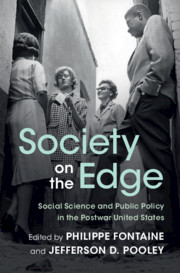5 - Discrimination
Published online by Cambridge University Press: 28 November 2020
Summary
Chapter 5 recounts how social scientists, during and after the war, tended to treat discrimination as a system-one with interlocking legal, political, and economic dimensions. By the 1950s systemic frameworks had receded in favor of more individualistic explanations for the “race problem.” The study of discrimination remained strikingly cross-disciplinary, but the lens of prejudice-individual attitudes in the aggregate-was newly prominent, supported by philanthropy and Cold War discretion. Gary Becker brought microeconomics to discrimination in this period, too, in an approach that, like the psychology of prejudice, stressed the causal priority of dispositions. The announcement of formal equality in the civil rights legislation of the mid-1960s complicated the study of race for the balance of the century. Systemic accounts were partially revived, and evidence for persisting racial inequality was widely documented. But causal factors proved harder to identify. In the wake of de jure segregation, even radical critics of “institutional racism” and “internal colonialism” conceded that discrimination's effects were easier to describe than its causal dynamics. Quantitative sociologists and economists deployed a cascade of measures that demonstrated disparate outcomes, though again without clear explanatory accounts rooted in discrimination.
Keywords
- Type
- Chapter
- Information
- Society on the EdgeSocial Science and Public Policy in the Postwar United States, pp. 173 - 223Publisher: Cambridge University PressPrint publication year: 2020



